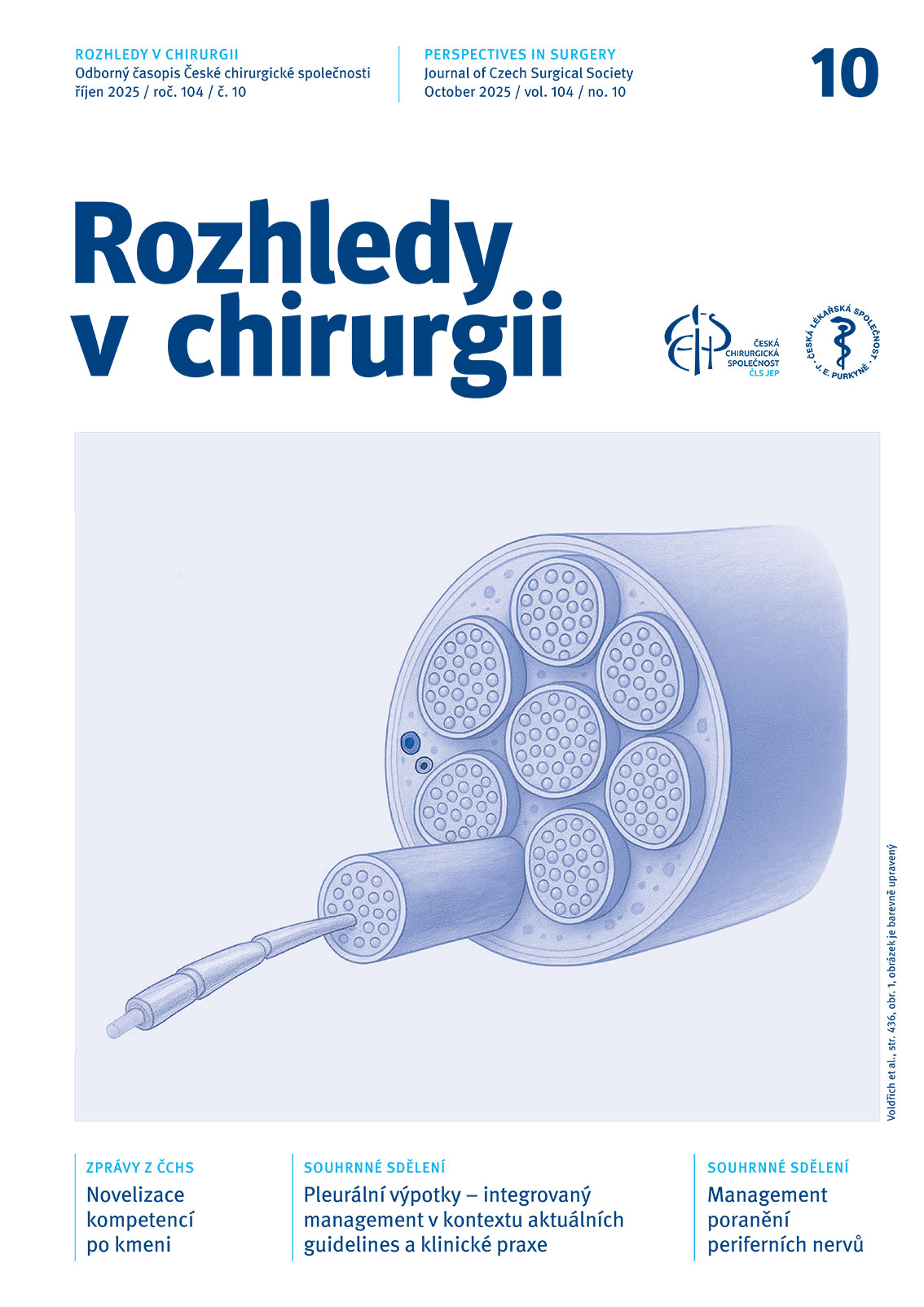Abstract
Introduction: Thoracic drainage is a standard component of lung resections. It serves as a postoperative control of the pleural cavity, drains fluid, and detects air leaks. The digital drainage system allows more accurate detection and quantification of air leak.
Aim and methods: The primary objective of this study is to compare the duration of drainage with a conventional three-chamber drainage system versus the Medela Thopaz+ digital drainage system in patients undergoing lung resection for tumor. This is a prospective randomized study, conducted between 2017–2020. A total of 154 patients were enrolled in the study, divided into two groups, a group using conventional chest drainage (group K, N = 84) and a group using the digital chest drain (group D, N = 70). In these groups, patients were then divided according to the extent of lung resection (anatomical, group A, and non-anatomical, group N).
Results: There was no significant difference in drainage duration between digital and conventional drainage in the study group (drainage duration: group A, P = 0.865, group N, P = 0.775). The incidence of air leak was 33% in group K and 52% in group D, of which prolonged air leak occurred in 3.6 vs. 2.8% (K vs. D).
Conclusion: Digital chest drainage does not affect the duration of drainage and thus shorten hospital stay, considering the extent of lung resection. However, it represents a more accurate and easier control of postoperative air leak and pleural secretion. The advantages include the easy handling of the device and the possibility of reusing the drain with a reduction of costs.
doi: 10.48095/ccrvch2025451

